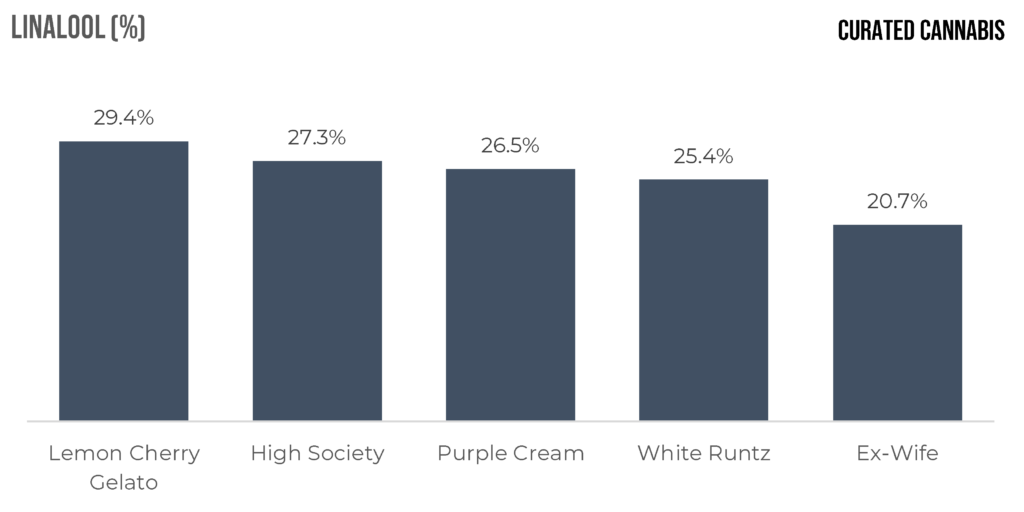Let’s dive back into the world of terpenes and discuss the role they play in cannabis.
Terpenes are a diverse group of organic compounds found in cannabis plants that contribute to its distinct aroma and flavor profiles. These compounds are produced in the trichomes of the cannabis plant, which are small, glandular
structures that cover the leaves, flowers, and stems of the plant. In addition
to their aroma and flavor, terpenes may also have therapeutic effects, and
research has shown that they can interact with other compounds in the plant, such
as cannabinoids, to enhance or alter their effects.
There are over 100 different terpenes found in cannabis, with varying levels
of concentration and potency. Some of the most common terpenes found in
cannabis include limonene, myrcene, pinene, linalool, and caryophyllene. Below we’ll explain the traits of these terpenes and also show which cultivars possess the most of each one.
Limonene, which is also found in citrus fruits, has a citrusy, fruity aroma
and is thought to have mood-enhancing and stress-relieving effects.

Myrcene, which is also found in hops and mangoes, has a musky, earthy
aroma and is believed to have sedative and relaxing effects.

Pinene, which is also found in pine needles and other coniferous
trees, has a fresh, piney aroma and isthought to have anti-inflammatory
effects.

Linalool, which is also found in lavender, has a floral, spicy aroma and is believed to have calming and anti-anxiety effects.

Caryophyllene, which is also found in black pepper and cloves, has a spicy, peppery
aroma and is thought to have anti-inflammatory and
analgesic effects.

The presence and concentration of terpenes in cannabis can vary depending on
the cultivar and growing conditions. Some cultivars may have higher levels of
certain terpenes, which can contribute to their unique aroma, flavor, and
effects. In addition, terpenes may interact with other compounds in the plant,
such as cannabinoids like THC and CBD, to modulate their effects.
Terpenes are an important component of cannabis plants that contribute to their aroma, flavor, and therapeutic
effects. Further research is needed to fully understand the potential benefits
and interactions of these compounds with other compounds in the plant.
Check out our last blog post where we cover Terpenes 101!


